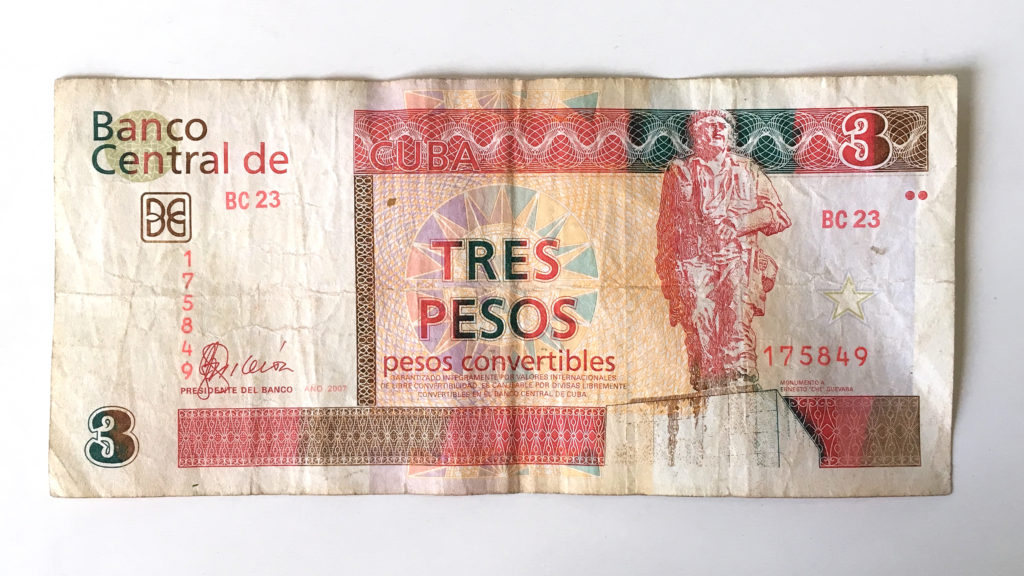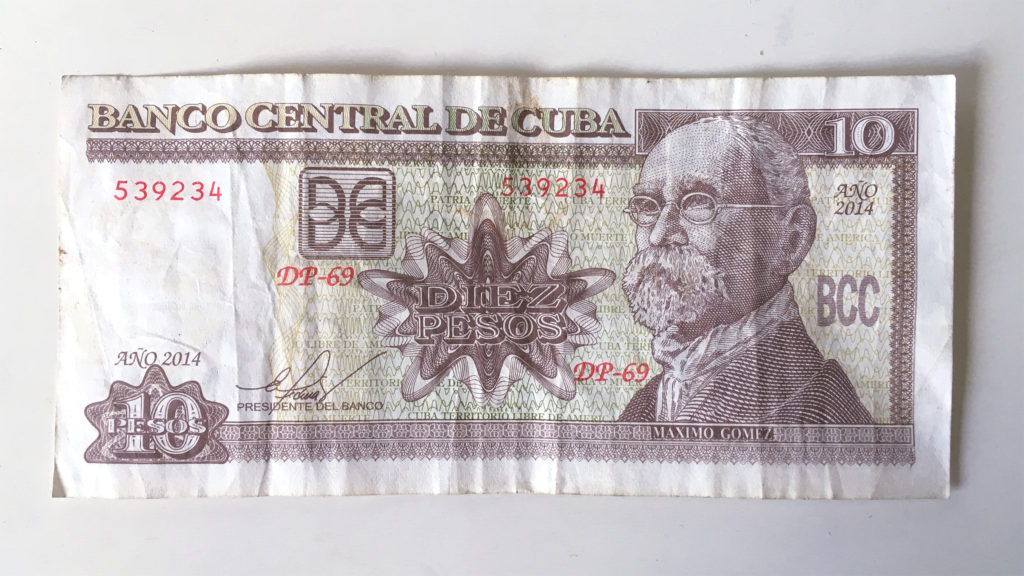My 2¢ is less about the design of these two Cuban banknotes than about what they represent.
As a US-dwelling Canadian who has wanted to visit Cuba for many years, I finally made the trip there from Toronto in early 2015 — ironically, just after the announcement of the normalization of relations with the US.
Cuba is a striking and remarkable place in so many ways. But one of the things that struck me most upon arriving there was the discovery that since 1994 Cuba has had two parallel currencies: the Cuban Peso (CUP), which is used for trade among Cubans; and the Convertible Cuban Peso (CUC), which is used by visitors to the country and for international trade, and is pegged to the US dollar. So 1 CUC equals 1 USD — and 1 CUC equals approximately 25 CUP.
Visitors may only exchange foreign currency for CUCs; but occasionally you might pay for something in CUCs and receive a small amount of change in CUPs. That’s how I came into possession of the 10-CUP note above, which is worth about 40¢.
The two notes contain similar visual features: iconic revolutionary figures on the front, scenes of the Peoples’ Revolution on the back. But the contrast in their material qualities is more significant. Of course the 3-CUC note is worth 7.5 times the value of the 10-CUP note; but still it’s hard to ignore the far more muted and restricted colour palette of the local note, as well as the fact that it is printed on much coarser, cheaper paper (you’ll have to take my word for that). Its design and typography also feel less ‘contemporary’, despite its actually being a more recent printing (2014) than the CUC note (2007).
Most importantly though, this visual difference between the two notes reflects a profound difference in how they function. As a result of these two parallel currencies, Cuba also essentially now has two parallel economies: one for Cubans whose work is part of the 75% state-run economy, and another for those whose work serves the tourism industry or foreign trade.
And if you’ll forgive the metaphor, this coin very much has two sides.
On one hand, prices for goods are generally the same in CUPs as CUCs — meaning that goods bought by Cubans paying in the local currency cost them 1/25th of what they cost foreigners paying in the convertible currency — so the cost of goods is effectively scaled to the wages people earn, which seems eminently fair. But on the other hand, this is not the case for people who work in any industry serving foreigners: they earn CUCs, and this means that wages in the tourism industry are effectively 25 times higher than they are for anyone else.
This fact was driven home to me most disconcertingly while chatting with the charming host of a restaurant in Central Havana. It turned out that in addition to his job as a host in this restaurant, he was also a doctor. Not only that: he was in fact the head of the psychology department at a Havana hospital, but was working as a host in this restaurant as well because in a mere four nights there he could earn the same amount that he earns in a month in his professional position as an accomplished doctor of psychology. Gulp.
This results, of course, in a massive drain of labour and talent from the professional sector of the Cuban economy into the tourist sector — and means that services for Cubans become increasingly impoverished relative to those for visitors, which benefit from a constant influx of this high-value currency. This was utterly shocking to me, and made me truly fear for the life and soul of the country once it is flooded with the inevitable impending barrage of tourists from the US.
Fortunately there’s talk of uniting the two currencies in the coming year or so. This will no doubt engender its own complications — and certainly won’t entirely shield the country from the effects of a sudden and vast influx of tourists, both good and bad — but ultimately it will at least ensure that all Cubans occupy a more level playing field. And then these two notes will no longer be just a souvenir, but a relic of another time.
This post is part of My 2¢, a short series on money-related type and lettering examples, stories and thoughts. You can read the rest of the series here.

